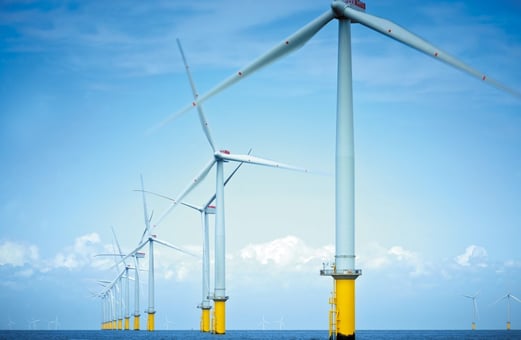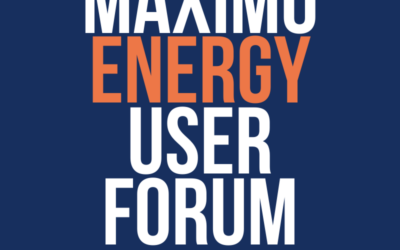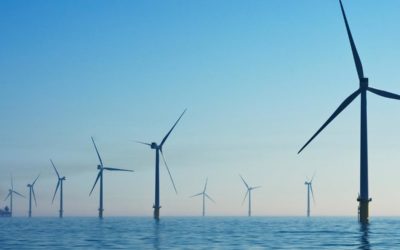BPD Zenith have worked with owners and suppliers of Offshore Wind Farms for a few years now and while the industry has had its fair share of stumbles and delays, recent news and events show a very bright future for the industry.
I think it’s fair to say that the UK is one of the leaders in Offshore Wind. The UK generates more electricity from offshore wind than any other country. Half of Europe’s offshore wind power was built by the UK in 2017. The UK is home to the world’s largest wind farm at London Array.
Bright Future Ahead
Personally, what I find most exciting is the future of the industry in the UK. Work has already begun on Hornsea Project One, scheduled to be completed in 2020. Off the Yorkshire coast, Hornsea Project One will be the world’s largest offshore windfarm at 157 square miles, with Hornsea Project Two recently being awarded the go-ahead, and Hornsea Project Three in the early planning stage by lead developer Ørsted.
Any concerns that may have existed about the future of the industry in the UK were alleviated further when the government awarded three offshore wind projects a Contract for Difference (CfD) in September 2017. These projects were the Triton Knoll offshore wind farm, the Moray Offshore Windfarm (East) and the Hornsea Project Two mentioned above.
Industry Event
I recently attended a ‘Meet the Buyer Event’ for Dogger Bank Offshore Wind Farm in Sedgefield, organised by NOF Energy and in partnership with Energy Coast. Consisting of four Offshore Wind projects, the main Joint Venture is between SSE and Equinor (formally Statoil), who are working in a 50:50 partnership on three of the four Offshore Wind Projects (Dogger Bank Creyke Beck A, Dogger Bank Creyke Beck B and Dogger Bank Teesside A).
During the event, there were a couple of things which peaked my interest:
- Strong support for the Project
The event was attended by delegates from over 200 companies, both local and global leaders, with several of them exhibiting. What made this attendance even more impressive was that whilst work on Creyke Beck A goes back to early 2010, there is still a journey to go for pre-construction, construction and operation. This showed how well supported the project is and how many companies are planning for the Dogger Bank Zone to be part of their future success.
- Increased Links with the Oil and Gas Industry
When BPD Zenith first started speaking to leaders in the Offshore Wind Industry, there was a distinct separation between the Offshore Wind and Oil & Gas Industries. While at two different stages in their lifecycle, I always felt that there were many similarities between the two industries. This includes both the challenges within the industries and the skills required to overcome them. Now, with global demand for wind power growing, major oil & gas are diversifying their portfolios. I do hope that these links will continue to grow and believe it is key to achieving generation targets, especially in the latter half of the Farm’s life.
Throughout the Dogger Bank presentation there was also an emphasis on safety and efficiency being key to success. This is something we’ve come to expect to hear from any company. But what I find interesting is how efficiency translates in the Offshore Wind industry?
Efficiency for Offshore Wind Farms
From our experience, efficiency can come from a variety of initiatives and/or methods. However, what is common, especially in the Offshore Wind Industry, is looking ahead to longer-term future strategic planning. This goes well beyond planning for CfDs, Build or moving into Production, but throughout the Farm’s lifecycle.
For the first 5 years of production, the Offshore Wind Farm is under warranty. Whilst this provides the maintenance required, we’ve found that the most efficient companies have used this time to prepare for the other 80% of its life. Looking at not just what they are being provided, but more importantly, what they need to work smarter, reduce downtime and achieve expectations. As on occasion, what is expected and what is provided isn’t aligned!
For example, collecting all maintenance history over the warranty period is key to planning the ongoing maintenance strategy for the Offshore Wind Farm. Unless the data is in a format that can be reviewed and analysed effectively together, little insight can be realised. This then restricts what planning can be achieved and without a quality maintenance strategy, unplanned outages are sadly inevitable.
Planning for the Future
While solutions can be designed and implemented at any point, the later this is addressed, the more effort is required to convert existing data, reducing efficiency. Furthermore, it is much more difficult to identify any ‘gaps’ in information, without a structured method of recording and storing data. While several systems are available to help record this information, what needs to be considered is not just today’s requirements but much more importantly, your future requirements. An asset register is fine initially, but to drive efficiencies going forward, you’ll need an Enterprise Asset Management Solution. Picking a smaller system for today, will mean future additional effort and cost migrating to another system later.
Consider investing in solutions that can grow with your needs and work with an implementation partner who understands the needs of your industry, and ideally, similar industries such as Oil & Gas. This will arm you with insight to succeed not just today, but throughout the entire lifecycle of the Offshore Wind Farm.




